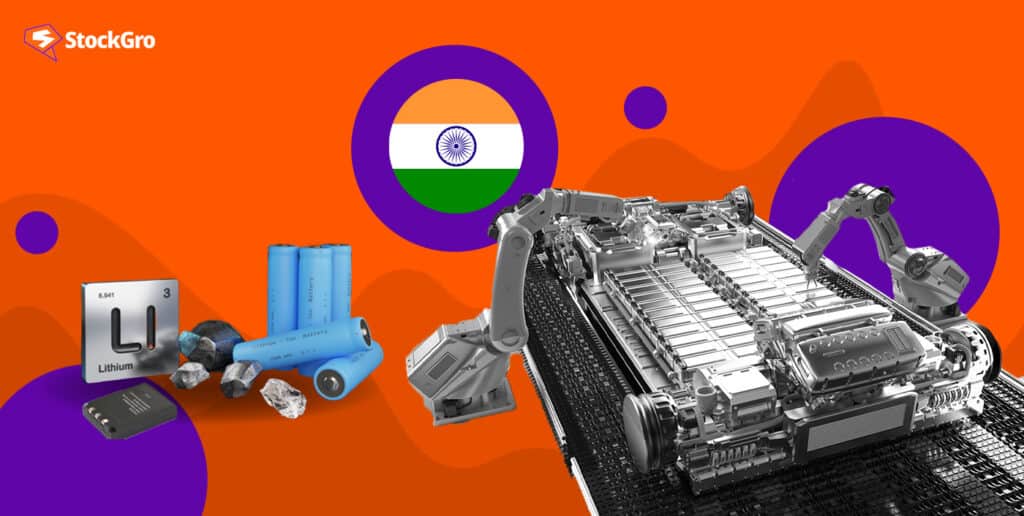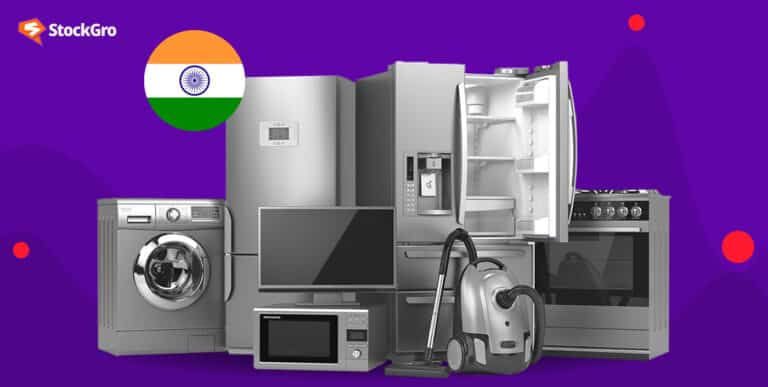
Electric vehicles (EVs) are becoming more popular as a result of consumers’ growing awareness of the reality of climate change. With a high reliance on lithium, the worldwide market for electric vehicles is expected to grow at a CAGR of 18.2% from 2021 to 2030, reaching $823.75 billion.
Along with EVs, lithium-ion batteries, or LIBs, are becoming more and more common in a variety of applications outside of simply electric vehicles, such as consumer electronics and power tools.
Along with government initiatives, India has seen a surge in Foreign Direct Investment (FDI) in the battery production sector, with major Japanese corporations making significant investments in the Indian market.
That said, in this article, we will dive deep into the future outlook of the lithium-ion battery manufacturing industry in India with a look at its investment prospects.
Also read: The role of the energy sector in powering India’s growth.
Understanding the lithium-ion battery industry
In today’s world, lithium-ion batteries, or LIBs, are one of the primary options for energy storage. The market share and application sectors for LIBs have grown quickly and are still on the rise. These batteries have completely transformed our daily lives and laid the foundation for a wireless society that isn’t dependent on fossil fuels.
Because of their high power density and extended cycle life, LIBs have found significant applications in portable devices, electric vehicles, and other applications. In addition to electric cars, lithium-ion batteries have become common in many other electronic gadgets, including smartphones, computing systems, and more.
As technology surrounding lithium-ion batteries continues to advance and their price points decrease, the variety of uses for these batteries will likely expand.
The market for lithium-ion batteries is expected to rise roughly seven times between 2022 and 2030, reaching 4.7 terawatt-hours. The increasing popularity of electric automobiles, which mostly run on lithium-ion batteries, is largely responsible for this rise.
History of the lithium-ion battery manufacturing industry in India
The origins of the lithium-ion battery may be found in the 1980s when Professor Goodenough was working on a replacement for the widely used lead-acid batteries.
Thanks to the discovery of a 5.9 million tonnes lithium resource in Jammu and Kashmir, India will no longer need to import as many EV batteries, cell phones, laptops, and other electrical equipment.
With this reserve, India’s growing electric vehicle sector would have enough lithium to satisfy its needs. Significant technical developments have brought lithium to the forefront since the commercialisation of lithium-ion batteries in the 1990s.
Also read: What does the EV boom mean for auto stocks?
Growth of the lithium-ion battery manufacturers in India
Following the announcement of 5.9 million metric tonnes of lithium inferred resources in the Reasi district of J&K, the government has projected that India will need 903 gigawatt-hours (GWh) of storage for energy to decarbonise its power and transport industries by 2030. Lithium-ion batteries will satisfy a large percentage of this demand.
Only 98 million tonnes of lithium reserves are known to exist globally. Approximately 5.5% of these resources have now been found in India, which marks an era of change for the global electric vehicle market and the growing EV sector.
Minerals such as lithium will be just as crucial as oil and gas are now for a sustainable future. India has a strategic interest in securing the minerals and establishing the necessary domestic cell and battery production infrastructure.
India’s commitment to boost this sector is seen in the budget for the financial year 2023-24, which removed taxes on machinery used in the production of batteries and provided helping hands to bridge the viability gap for battery initiatives.
In the long term, it will fuel the nation’s grid and the transition to electric vehicles while reducing its dependency on other nations.
However, to do so, India needs to boost R&D spending, focus on producing battery cell components, cut material costs, and encourage recycling to lessen the demand for new materials and increase local lithium-ion production.
Future outlook of the lithium-ion battery companies
The Indian government is actively promoting the use of electric vehicles, and the market for these vehicles is expected to attain 30-60% penetration with the help of central and state assistance.
In India, the percentage of EVs will reach 50% by the 2032–2033 fiscal year, provided ongoing financial assistance by the government. With incentives of ₹1.8 trillion during FY24-28 and initial capital expenditure of $30-33 billion, it is possible to meet the 250 GW battery demand.
The government has boosted the E2W subsidy to 1.5x and prolonged the FAME initiative for two years, until March 2024. Additionally, to encourage lithium-ion batteries, the government has restricted FAME subsidies.
Although the subsidies and incentives in this area are commendable and will undoubtedly be helpful, we need to consider how to differentiate the incentives for electric vehicle batteries from those for the vehicles themselves.
According to experts, by keeping a laser-like focus on battery manufacture, supply chain management, and technology, India will be able to ensure our electric vehicle future.
Also read: The renewable energy industry in India: A game-changer for the environment
Top lithium-ion battery manufacturers in India
Below are some of the EV battery manufacturers in India on BSE as of March 4, 2024, ranked by market capitalisation.
| Company | Market cap (₹ cr.) | Net profit (₹ cr.) | Share price % returns (1Y) as of March 4, 2024 |
| Exide Industries Ltd. | 27,965.00 | 903.63 | 82.03 |
| Amara Raja Energy & Mobility Ltd. | 15,526.96 | 694.41 | 48.22 |
| HBL Power Systems Ltd. | 14,143.87 | 95.54 | 413.32 |
| Eveready Industries India Ltd. | 2,505.53 | 20.13 | 10.11 |
Conclusion
To sum up, India’s new finding of lithium reserves is a critical milestone for ensuring reliable energy and mobility that are beneficial to the environment. Moreover, the Indian government has implemented programmes like FAME as part of a comprehensive strategy to promote the expansion of the battery industry.
It is safe to say that the government’s actions and lithium deposits in India are encouraging future economic development and energy security.

